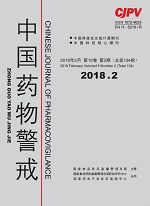|
|
Comparison of Aconitum with Tripterygium in Treatment of Axial Spondyloarthritis: A Benefit-risk Assessment
ZHANG Xiao-meng, LIN Zhi-jian, ZHANG Bing, LI Min
2018, 15(2):
103-109.
Objective Quantitatively comparing the benefit and risk of Aconitum and Tripterygium in the treatment of axial spondyloarthritis (ax-SpA), which can provide guidance for rational use of medicines in clinic. Methods The data, which from random clinical trials (RCTs) that Aconitum or Tripterygium vernus western medicines in the treatment of ax-SpA, was extracted and merged by RevMan 5.2 software. Based on the benefit-risk assessment framework of herbs for treating ax-SpA that was built by the multi-criteria decision analysis model in Hiview 3 software, the benefit value, the risk value and the total benefit-risk value of Aconitum and Tripterygium were calculated. And the probability of difference value caused by the two therapies were conducted by Monte Carlo simulation. Results 14 RCTs of Aconitum and 7 RCTs of Tripterygium that each vernus western medicines in the treatment of ax-SpA were included. Comprehensively and quantitatively compared the benefit and risk of Aconitum and Tripterygium in the treatment of ax-SpA, the difference of efficacy between Aconitum and Tripterygium was 3[95%CI (7.39, 16.45)], which probability was 86.53%; and the difference of risk was 80[95%CI (73.24,86.48)], which probability was 100%. When benefit and risk were the same important for ax-SpA patients, the total benefit-risk value of using Aconitum was 65, while that of Tripterygium was 24, their difference was 41[95%CI(35.67,46.23)] and the probability of the former superior to the latter was 100%. The results were stable which tested by sensitivity analysis. Conclusion Based on the available evidence, the benefit-risk of Aconitum for ax-SpA patients is significantly superior to that of Tripterygium. If ax-SpA patients that cannot accept the medication risk, the application of Tripterygium is not recommended.
References |
Related Articles |
Metrics
|
